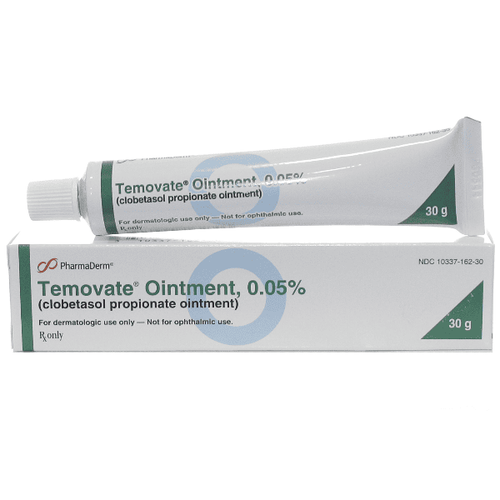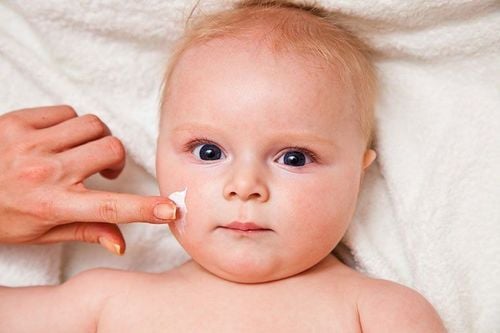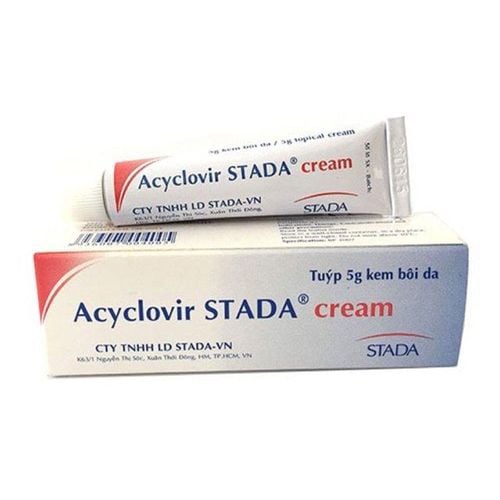This is an automatically translated article.
Care of people with erythema multiforme can be done at home with pain relievers and cleaning of skin and mucosal ulcers as well as ensuring nutrition, water and electrolytes. In particular, patients also need to be closely monitored, early detection of abnormal signs to take them to the hospital for comprehensive care.1. How to take care of erythema multiforme at home?
Because they are likely to resolve on their own after a few days, mild cases of erythema multiforme may require only symptomatic home treatment, including pain relievers or non-steroidal anti-inflammatory drugs (NSAIDs); cold compress with saline solution or Burrow solution; topical steroids and gentle oral care methods such as gargling with salt water.Besides, the nutritional issue of the patient also needs attention, so "what to eat" is a lot of people's attention. Accordingly, patients should only eat soft, liquid foods, soups to avoid hurting blisters or sores in the mouth. At the same time, drink plenty of water, supplement fluids in different forms to prevent water loss through skin lesions.
However, people with erythema multiforme should abstain from foods that have previously caused allergies or are at high risk of causing allergies such as sea fish, legumes... and also environmental agents around around like smoke, animal hair. When taking care of people with erythema multiforme, the house needs to be clean, avoid going out or being exposed to an abnormal environment until the skin lesions heal.
However, while caring for people with erythema multiforme at home, it is necessary to monitor the following signs of severe progression for hospitalization and receive specialized medical intervention:
Vomiting a lot or not If you can't drink water, there's a high risk of fluid and electrolyte loss. Wheezing, shortness of breath, and need for supportive respiratory care, including sputum suction and postural drainage. Severe pain, need to use specialized pain relievers to control severe pain.. There are signs of infection of skin sores such as pus discharge, ...

Chăm sóc người bị hồng ban đa dạng có thể thực hiện tại nhà
2. Caring for people with erythema multiforme at the hospital
Severe erythema multiforme may require hospitalization for complications and sequelae (eg, severe mucosal injury or poor nutrition, dehydration, or secondary infection) as well as for fluid management. and the patient's electrolytes are better. At this point, the care of people with severe erythema multiforme should be done in intensive care units or specializing in the treatment of burns.Accordingly, the care at the burn unit combined with the surgical specialty can bring the highest chance of survival for the patient. Exfoliated areas should be treated like a thermal burn, although it is best to avoid peeling while the lesions are still progressing. Erosted skin areas can still be bathed for 1 to 2 days with physiological saline or Burrow's solution, then change into clean, gentle clothes to prevent skin damage.
Since wound healing usually takes about 2 weeks, during which time proper skin care is essential, including practicing aseptic handling and avoiding the use of skin-adhesive materials. Use topical agents such as 0.5% silver nitrate solution or 0.05% chlorhexidine solution for cleaning; Remember to warm these solutions before use. Avoid using silver sulfadiazine as it can cause skin irritation.
If erythema multiforme caused by herpes simplex virus (HSV) or associated with pneumonia, the patient should be prescribed antiviral drugs or antibiotics. Even intravenous antibiotics may still be needed to treat secondary infections. At this time, the implementation of isolation under multiple barriers is necessary to reduce the risk of infection.
In the case of drug-induced erythema multiforme, immediate withdrawal of all potentially pathogenic drugs is required. Once the patient is stabilized in the burn intensive care unit, the peak of disease progression has passed and re-purification begins. The process of re-epithelialization will now take place, usually taking 10-14 days. At the same time, the patient can continue to receive routine postoperative care, including:
Fluid and nutritional resuscitation: Administer a liquid diet through a flexible, flexible feeding tube into the stomach or intestines. premature and intravenous fluid therapy may be necessary. Avoid central venous access if possible to reduce the risk of line infection. Pulmonary support: Monitor and promptly intervene in patients with mild hyperventilation and hypoxemia. From there, choosing the right time to provide active lung support helps detect and treat diffuse interstitial pneumonia early, preventing the development of acute respiratory distress syndrome (ARDS). Other supportive care: Maintain thermoregulation by keeping the ambient temperature at 30-32°C, using only warmed liquids, and using heating lamps or blankets. A pressure support surface, air or gel mattress, or specialized bed should be used to prevent pressure sores. Use antacids, proton pump inhibitors, or histamine 2 blockers to prevent stress ulcers. Inject heparin under the skin to prevent the development of deep vein thrombosis. Consult specialists when necessary: To make a diagnosis and perform a skin biopsy if indicated; assess the underlying cause of systemic disorders and sequelae; care for eye injuries and burns or open, infected wounds.

Việc chăm sóc người bị hồng ban đa dạng mức độ nặng nên thực hiện tại bệnh viện
3. Prophylactic treatment for erythema multiforme
Topical corticosteroids are useful for outpatient treatment of patients with limited disease. Although there is controversy regarding the use of oral steroids in calming the body's inflammatory response, the drug can still be helpful if taken as a short 10-day course. Care for the prevention of recurrence of erythema multiforme associated with herpes should be considered with oral acyclovir in patients with more than 5 episodes per year. At the same time, the patient may need preventive treatment for 6-12 months or longer. If the patient's condition is unresponsive, continued treatment with valacyclovir has been reported to be effective. Tamoxifen can prevent erythema multiforme in the premenstrual period. Prophylactic antibiotics are not recommended because they increase the likelihood of developing resistant strains of microorganisms. However, evidence of infection requires rapid culture and selection of appropriate antibiotic therapy based on culture results and sensitivity. In summary, for people with erythema multiforme, comprehensive care is often symptomatic, pain relief, and topical hygiene. Besides, because the cause of erythema multiforme can recur, the care of people with erythema multiforme must also actively look for the cause to prevent, especially when a drug is suspected, it is necessary to stop using it. use immediately.Please dial HOTLINE for more information or register for an appointment HERE. Download MyVinmec app to make appointments faster and to manage your bookings easily.
References: fairview.org, emedicine.medscape.com, jucm.com












